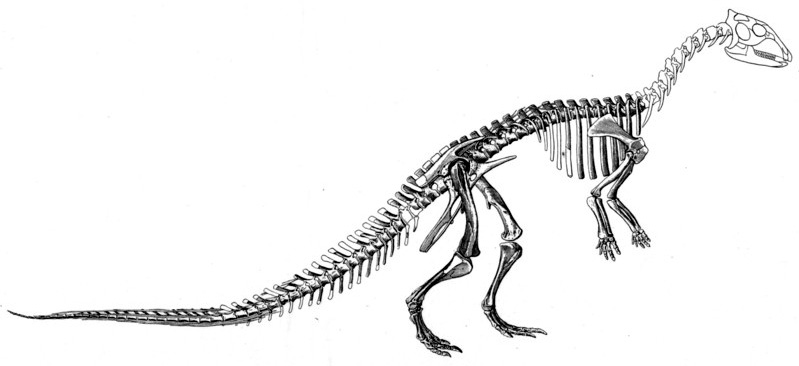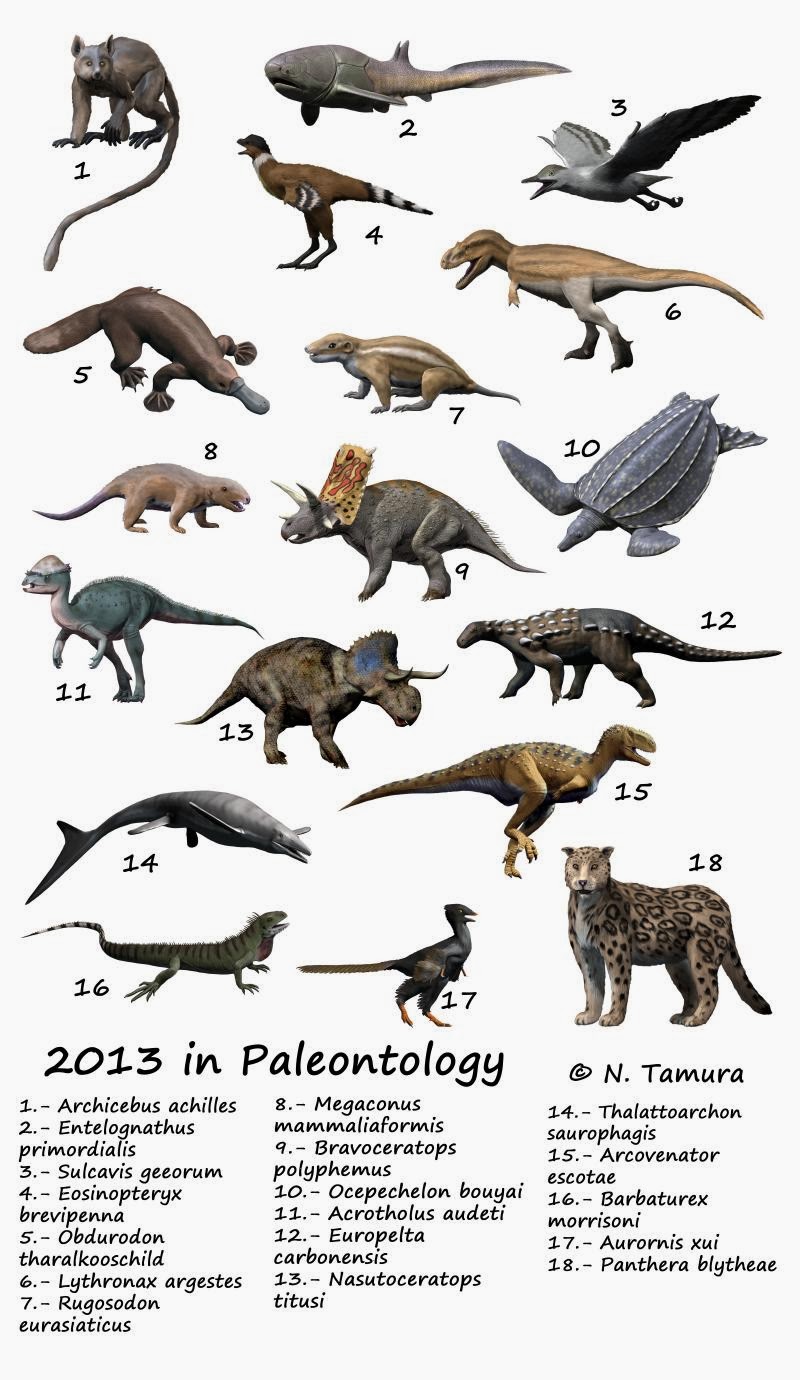|
Orodrominae
Thescelosauridae is a clade of neornithischians from the Cretaceous of East Asia and North America. The group was originally used as a name by Charles M. Sternberg in 1937, but was not formally defined until 2013, where it was used by Brown and colleagues as the group uniting ''Thescelosaurus'' and ''Orodromeus'', based on their phylogenetic results. During a phylogenetic revision of neornithischians by Clint Boyd in 2015, the authorship of Thescelosauridae was given to Brown and colleagues, which meant that the similar name Parksosauridae, informally defined in 2002 by Buchholz, would have had priority over Thescelosauridae. The two clades had slightly different definitions, with Parksosauridae referring to all animals closer to ''Parksosaurus'' than ''Hypsilophodon'', but they contained the same taxa so Boyd used Parksosauridae under the assumption it had priority. However, in formalizing the clade following the regulations of the PhyloCode, Madzia, Boyd, and colleagues identifi ... [...More Info...] [...Related Items...] OR: [Wikipedia] [Google] [Baidu] |
Koreanosaurus
''Koreanosaurus'' () is a genus of orodromine neornithischian dinosaur. One species has been described, ''Koreanosaurus boseongensis''. Discovery In 2003, three specimens of ''Koreanosaurus'' were found in the Late Cretaceous-age Seonso Conglomerate from the southern coast of the Bibong-ri dinosaur egg site, Boseong, Korean Peninsula. These specimens include the holotype KDRC-BB2, a partial upper skeleton lacking the skull, and two additional specimens which contains portions of the pelvic girdle and lower leg (KDRC-BB1 and KDRC-BB3). The type species was named after its locality ( Boseong site 5). This taxon was initially named and described in a master's thesis by Dae-Gil Lee in 2008, and was officially published by Min Huh, Dae-Gil Lee, Jung-Kyun Kim, Jong-Deock Lim and Pascal Godefroit in 2011. Description ''Koreanosaurus'' was a relatively small dinosaur, reaching in body length. Based on its taxonomic position and the existence of small burrows from the Seonso Cong ... [...More Info...] [...Related Items...] OR: [Wikipedia] [Google] [Baidu] |
Zephyrosaurus
''Zephyrosaurus'' (meaning "westward wind lizard") is a genus of orodromine ornithischian dinosaur. It is based on a partial skull and postcranial fragments discovered in the Aptian-Albian-age Lower Cretaceous Cloverly Formation of Carbon County, Montana, USA. New remains are under description, and tracks from Maryland and Virginia, also in the US, have been attributed to animals similar to ''Zephyrosaurus''. It lived approximately 113 mya. Discovery and history Hans-Dieter Sues named his new genus in recognition of the fossil being found in western North America, and Charles R. Schaff, who found the specimen. MCZ 4392, the type specimen, is composed of jaw fragments, the braincase and associated bones, several partial vertebrae, and rib fragments. He found the new genus to represent a previously unknown lineage of hypsilophodont (a taxon now considered not natural), similar in some respects to ''Hypsilophodon''. Because of the fragmentary nature of the type, and lack of ... [...More Info...] [...Related Items...] OR: [Wikipedia] [Google] [Baidu] |
Early Cretaceous
The Early Cretaceous (geochronology, geochronological name) or the Lower Cretaceous (chronostratigraphy, chronostratigraphic name) is the earlier or lower of the two major divisions of the Cretaceous. It is usually considered to stretch from 143.1 Megaannum#SI prefix multipliers, Ma to 100.5 Ma. Geology Proposals for the exact age of the Barremian–Aptian boundary ranged from 126 to 117 Ma until recently (as of 2019), but based on drillholes in Svalbard the defining Anoxic event#Cretaceous, early Aptian Oceanic Anoxic Event 1a (OAE1a) was dated to 123.1±0.3 Ma, limiting the possible range for the boundary to c. 122–121 Ma. There is a possible link between this anoxic event and a series of Early Cretaceous large igneous provinces (LIP). The Ontong Java Plateau, Ontong Java-Manihiki Plateau, Manihiki-Hikurangi Plateau, Hikurangi large igneous province, emplaced in the South Pacific at c. 120 Ma, is by far the largest LIP in Earth's history. The Onto ... [...More Info...] [...Related Items...] OR: [Wikipedia] [Google] [Baidu] |
Parksosaurus
''Parksosaurus'' (meaning "William Parks (paleontologist), William Parks's lizard") is a genus of neornithischian dinosaur from the Maastrichtian, early Maastrichtian-age Upper Cretaceous Horseshoe Canyon Formation of Alberta, Canada. It is based on most of a partially articulated skeleton and partial skull, showing it to have been a small, bipedalism, bipedal, herbivorous dinosaur. It is one of the few described non-hadrosaurid ornithopods from the end of the Cretaceous in North America, existing around 70 million years ago. Description Explicit estimates of the entire size of the animal are rare; in 2010 Gregory S. Paul estimated the length at 2.5 meters, the weight at forty-five kilograms.Paul, G.S., 2010, ''The Princeton Field Guide to Dinosaurs'', Princeton University Press p. 277 William Parks (paleontologist), William Parks found the hindlimb of his ''T. warreni'' to be about the same length overall as that of ''Thescelosaurus neglectus'' ( for ''T. warreni'' versus ... [...More Info...] [...Related Items...] OR: [Wikipedia] [Google] [Baidu] |
Thescelosaurus Neglectus
''Thescelosaurus'' ( ) is a genus of ornithischian dinosaur that lived during the Late Cretaceous period in western North America. It was named and described in 1913 by the paleontologist Charles W. Gilmore; the type species is ''T. neglectus''. Two other species, ''T. garbanii'' and ''T. assiniboiensis'', were named in 1976 and 2011, respectively. Additional species have been suggested but are currently not accepted. ''Thescelosaurus'' is the eponymous member of its family, the Thescelosauridae. Thescelosaurids are either considered to be basal ("primitive") ornithopods, or are placed outside of this group within the broader group Neornithischia. Adult ''Thescelosaurus'' would have measured roughly long and probably weighed . It moved on two legs, and its body was counter-balanced by its long tail, which made up half of the body length and was stiffened by rod-like ossified tendons. The animal had a long, low snout that ended in a toothless . It had more teeth than related gen ... [...More Info...] [...Related Items...] OR: [Wikipedia] [Google] [Baidu] |
2021 In Paleontology
Flora Plants Fungi New taxa Research * Exceptionally preserved specimens of ''Tawuia'', providing new information on the anatomy of this organism, are described from the Tonian Liulaobei Formation, Liulaobei and Shiwangzhuang Formation, Shiwangzhuang formations (China) by Tang ''et al.'' (2021), who interpret ''Tawuia'' as a Coenocyte, coenocytic eukaryote, possibly a Macroalgae, macroalga. * Microfossils which may represent early terrestrial fungi are described from the Ediacaran Doushantuo Formation (China) by Gan ''et al.'' (2021). * A Rhynie chert fossil ''Mycokidstonia sphaerialoides'', originally interpreted as an Ascomycota, ascomycete, is reclassified as a member of Glomeromycota belonging to the family Ambisporaceae by Walker ''et al.'' (2021). * Carboniferous organism ''Oochytrium lepidodendri'', originally classified as a fungus, is reinterpreted as an oomycete by Strullu-Derrien ''et al.'' (2021). * Probable fossils of Multicellular organism, multicellular Eukar ... [...More Info...] [...Related Items...] OR: [Wikipedia] [Google] [Baidu] |
PhyloCode
The ''International Code of Phylogenetic Nomenclature'', known as the ''PhyloCode'' for short, is a formal set of rules governing phylogenetic nomenclature. Its current version is specifically designed to regulate the naming of clades, leaving the governance of species names up to the rank-based nomenclature codes ('' ICN'', '' ICNCP'', '' ICNP'', '' ICZN'', '' ICVCN''). The ''PhyloCode'' is associated with the International Society for Phylogenetic Nomenclature (ISPN). The companion volume, ''Phylonyms'', establishes 300 taxon names under ''PhyloCode'', serving as examples for those unfamiliar with the code. RegNum is an associated online database for registered clade names. The ''PhyloCode'' regulates phylogenetic nomenclature by providing rules for deciding which associations of names and definitions are considered established, which of those will be considered homonyms or synonyms, and which one of a set of synonyms or homonyms will be considered accepted (generally the one ... [...More Info...] [...Related Items...] OR: [Wikipedia] [Google] [Baidu] |
Hypsilophodon
''Hypsilophodon'' (; meaning "high-crested tooth") is a neornithischian dinosaur genus from the Early Cretaceous period of England. It has traditionally been considered an early member of the group Ornithopoda, but recent research has put this into question. The first remains of ''Hypsilophodon'' were found in 1849; the type species, ''Hypsilophodon foxii'', was named in 1869. Abundant fossil discoveries were made on the Isle of Wight, giving a good impression of the build of the species. It was a small, agile bipedal animal with an herbivorous or possibly omnivorous diet, measuring long and weighing . It had a pointed head equipped with a sharp beak used to bite off plant material, much like modern-day parrots. Some outdated studies have given rise to a number of misconceptions about ''Hypsilophodon'', including that it was an armoured, arboreal animal, and that it could be found in areas outside of the Isle of Wight. However, research from the following years has shown thes ... [...More Info...] [...Related Items...] OR: [Wikipedia] [Google] [Baidu] |
2002 In Paleontology
Plants Gymnosperms Angiosperms Arthropods Insects Conodonts New taxa Archosauromorphs Dinosaurs New taxa Data courtesy of George Olshevsky's dinosaur genera list. Birds New taxa Plesiosaurs New taxa Pterosaurs In October, a partial ''Mesadacylus'' wing was discovered in the Kingsview Quarry of Colorado. This find marks the first time that a Morrison Formation, Morrison Paleobiota of the Morrison Formation#Pterosaurs, pterosaur has been found at more than one site in the formation.Foster, J. (2007). "''Mesadactylus ornithosphyos''." ''Jurassic West: The Dinosaurs of the Morrison Formation and Their World''. Indiana University Press. pp. 159-160. New taxa Lepidosauromorphs Squamates New taxa Synapsids Non-mammalian References {{Reflist, 2 2002 in paleontology, 2000s in paleontology 2002 in science, Paleontology ... [...More Info...] [...Related Items...] OR: [Wikipedia] [Google] [Baidu] |
2015 In Paleontology
Plants Cnidarians Arthropods Bryozoans Brachiopods Molluscs Echinoderms Conodonts Fishes Reptiles Amphibians Research * A study of the anatomy of the skull of ''Acanthostega gunnari'' is published by Porro, Rayfield & Clack (2015). * A study of the skeletal morphogenesis of the Lepospondyli, lepospondyls ''Microbrachis pelikani'' and ''Hyloplesion longicostatum'' is published by Olori (2015). * A study of the anatomy of the skull of the lepospondyl ''Quasicaecilia texana'' is published by Pardo, Szostakiwskyj & Anderson (2015). New taxa Temnospondyls Lepospondyls Lissamphibians Diadectomorphs Synapsids Non-mammalian synapsids Research * Redescription of the anatomy of ''Tiarajudens eccentricus'' is published by Cisneros ''et al.'' (2015), who compare the species with ''Anomocephalus africanus''. New taxa Mammals Other animals Research * A study of phylogenetic relationships of the Ediacaran animal ''Namacalathus'', interpreting it as a membe ... [...More Info...] [...Related Items...] OR: [Wikipedia] [Google] [Baidu] |
2013 In Paleontology
Plants Cnidarians Arthropods Bryozoans Brachiopods Molluscs Echinoderms Conodonts Fishes Amphibians Research * Laloy ''et al.'' (2013) reinterpret the Eocene frog species ''Rana cadurcorum'' from the Quercy Phosphorites (France) as a junior synonym of '' Thaumastosaurus gezei''. Newly named temnospondyls Newly named lepospondyls Newly named lissamphibians Turtles Research * A study on the anatomy of the brain and inner ear of the Jurassic turtle '' Plesiochelys etalloni'' is published by Paulina Carabajal ''et al.'' (2013). Newly named turtles Thalattosaurs Ichthyopterygians Lepidosauromorphs Newly named sauropterygians Newly named rhynchocephalians Newly named lizards Newly named snakes Archosauromorphs Newly named basal archosauromorphs Archosaurs Other reptiles Synapsids Non-mammalian synapsids Research * The postcranial skeleton of therocephalian ''Ictidosuchoides'' is described by Heidi Fourie (2013). New tax ... [...More Info...] [...Related Items...] OR: [Wikipedia] [Google] [Baidu] |
North America
North America is a continent in the Northern Hemisphere, Northern and Western Hemisphere, Western hemispheres. North America is bordered to the north by the Arctic Ocean, to the east by the Atlantic Ocean, to the southeast by South America and the Caribbean Sea, and to the south and west by the Pacific Ocean. The region includes Middle America (Americas), Middle America (comprising the Caribbean, Central America, and Mexico) and Northern America. North America covers an area of about , representing approximately 16.5% of Earth's land area and 4.8% of its total surface area. It is the third-largest continent by size after Asia and Africa, and the list of continents and continental subregions by population, fourth-largest continent by population after Asia, Africa, and Europe. , North America's population was estimated as over 592 million people in list of sovereign states and dependent territories in North America, 23 independent states, or about 7.5% of the world's popula ... [...More Info...] [...Related Items...] OR: [Wikipedia] [Google] [Baidu] |









